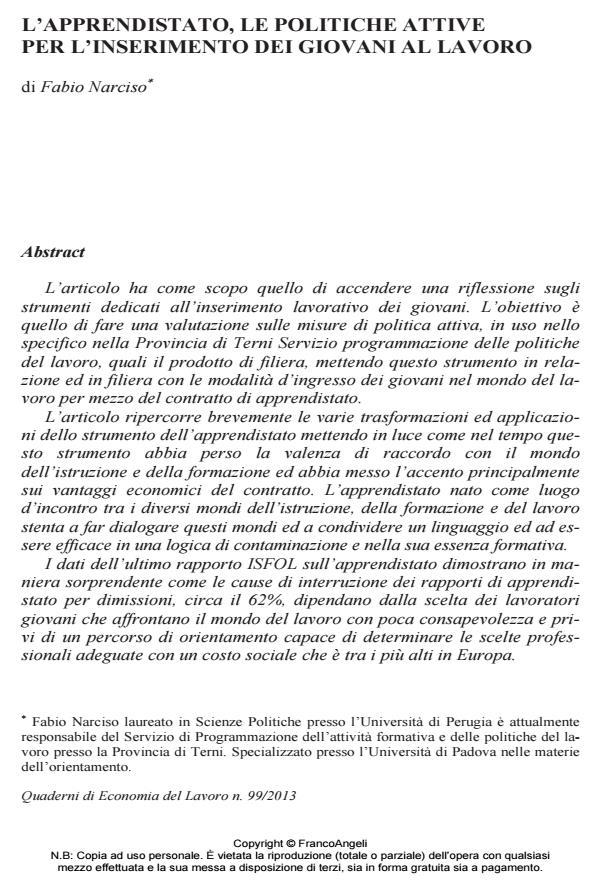L’apprendistato, le politiche attive per l’inserimento dei giovani al lavoro
Journal title QUADERNI DI ECONOMIA DEL LAVORO
Author/s Fabio Narciso
Publishing Year 2013 Issue 2013/99
Language Italian Pages 11 P. 185-195 File size 617 KB
DOI 10.3280/QUA2013-099010
DOI is like a bar code for intellectual property: to have more infomation
click here
Below, you can see the article first page
If you want to buy this article in PDF format, you can do it, following the instructions to buy download credits

FrancoAngeli is member of Publishers International Linking Association, Inc (PILA), a not-for-profit association which run the CrossRef service enabling links to and from online scholarly content.
The article provides a reflection on the existing measures for the job placement of young people. It focuses on how such measures are implemented and the apprenticeship contract is used in the Province of Terni - Service Employment Policies. The article briefly reviews the transformations and implementations of the apprenticeship contract highlighting how, over time, this measure lost the link between the world of education and training and has been mainly used for economic benefits. The apprenticeship contract was born in order to ensure a meeting point between the worlds of education, training and work. However, it is not yet able to make these worlds interact and share a common language nor is it effective in contaminating these worlds with its training spirit. Data from ISFOL’s last report on apprenticeship show strikingly that 62% of the causes of termination of apprenticeship contracts for resignation depend on young workers’ choices. As a matter of fact, young workers face the labour market with little awareness and without a guidance that can help their career choice. This condition contributes to increase social costs, which are among the highest in Europe. Finally, the article describes the product of the work experience chain that includes: i) training at the entrance; ii) six months paid internship; iii) obligation to job placement. This practice produced a 64% success rate of young people job placements and is seen as a virtuous circle of knowledge to maximize the demand/supply matching.
Fabio Narciso, L’apprendistato, le politiche attive per l’inserimento dei giovani al lavoro in "QUADERNI DI ECONOMIA DEL LAVORO" 99/2013, pp 185-195, DOI: 10.3280/QUA2013-099010